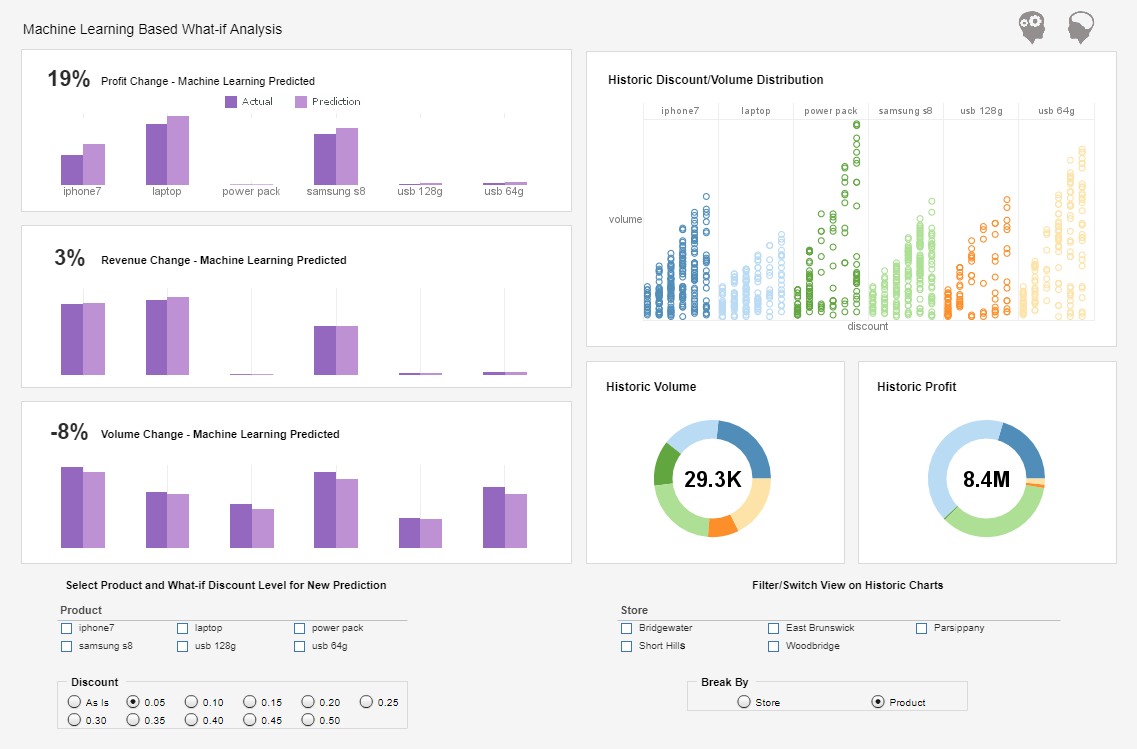InetSoft CEO Interviewed about Data Mashup by Business Intelligence Network
On October 15, 2008, Luke Liang, CEO and co-founder of InetSoft, was interviewed by Mary Jo Nott, Executive Editor at the Business Intelligence Network, about the meanings and origins of mashup and its specific application in business intelligence solutions.
Mary Jo Nott (Executive Editor, Business Intelligence Network): I know that InetSoft Technology has been a player in the BI space for a number of years. Maybe you could give us a little update on what has been happening at your company?
Luke Liang (CEO, InetSoft Technology): Sure. For the past year or so we have been focused on our data mashup technology. This technology has been out there actually longer than a year. We have been doing this for the past three years. We have begun to see a lot more interest recently.
Technology-wise we have evolved a lot. That allows our customers to really push out the usage of the technology to a wide range of areas. That has become the cornerstone of our full stack of BI solutions. That is what we call Data Block, our technology for data mashup.
That now serves as the layer that supports both our visualization, which is more analytic, or executive front-end, as well as publishing, which helps our customers to produce reports and do the more traditional BI types of content generation.
Nott: You're right. The term mashup is relatively new, within the last one to three years. But I did see a report that Forrester issued in May called "The Mashup Opportunity," and they claim that mashups will become a $700M market by 2013. Let's talk about mashups today. How do you define mashup?
Liang: Mashup actually is a term not invented by us, not even by the IT industry, if you will. It was originally first used in the media space. In the past people began to use different content and then mix them up. For example, in the music industry there are people who take the notes from different songs and mix them up and come out with some very interesting new music that way.
Later this same concept began to migrate onto the Web. In the first couple of years of this century, after 2000, this concept, once it was introduced onto the Web, people began to come up with many different combinations of content. For example RSS feeds can be considered as one basic type of mashup. People would combine the content from different sites, different sources of information, and come up with their own information portal, if you will.
For a more advanced mashup on the Web I often use the example how people plot different data over a map which becomes a very important application on the Web that will help people visualize what that data means in a geographic sense.
In our case what does this have to do with the BI space? We believe we are pioneers in terms of how to try to apply mashup in this space. This mostly comes from our experience observing what our customers were trying to do. We have been in the BI business for about 12 years now. We have seen a lot of different applications and usage.
One thing we found is that a lot of times users, customers of ours, are really struggling to get the data straight. What they are trying to do, actually, many times end up as some sort of very large project that requires them to go through a whole series of ETL processes, data warehousing, etc. That becomes a very resource intensive, as well as a slow process. Many times their requirements do not warrant that type of attention or investment or sometimes simply cannot be done because of resource constraints.
There's a simpler way to help people to do that. That's where we begin to apply mashups. Actually a lot of those data assets they are trying to work with already exist in some form. And if you can just take that asset, maybe take a couple of them, and put them together. It's almost like when you have a set of reports, you have good reports for one purpose here. You have another group of reports for another purpose over there. Even though they are on paper, you really wish you could just take them and mix them together and come up with a new way of looking at information or discover new knowledge out of the same data. That's the whole concept of data mashup. We basically built our product from this idea.
| 1 2 3 4 | Business Intelligence - Data Mashup |


